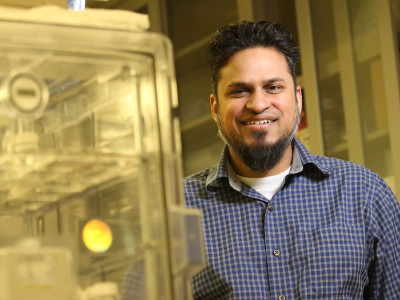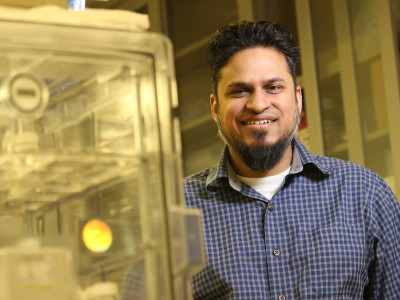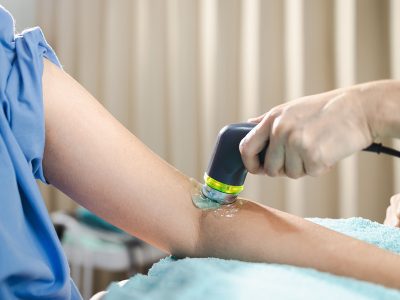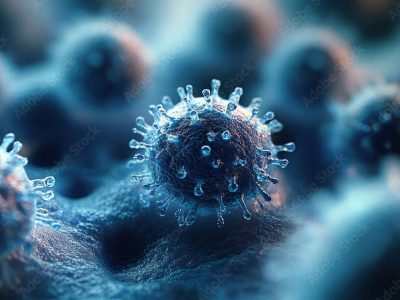The lack of access to clean drinking water impacts billions worldwide. With an estimated 46% of the global population affected, underdeveloped communities don’t have the means to utilize efficient technology for water purification. As the percentage of those affected grows, associate professor Ian Hosein was recently awarded a patent that shows promise in addressing global water security and revolutionizing sustainability. To Hosein, sustainability is more than just a solution to environmental issues–it’s a means of empowerment.
“There’s an enormous amount of energy out there at a time when the world needs it most,” Hosein says. “We’re taking energy from the sea, which everyone has access to, and providing a simple technology to be able to harness that energy.”

As an associate professor in biomedical and chemical engineering and a leader of a research group that develops sustainable technologies, Hosein is dedicated to clean energy efforts. Sparked by a student’s curiosity to investigate alternative energy sources, he began the journey to his patent by exploring the effectiveness of current filtration systems.
“We worked a lot with polymers and plastics, which were great for filtration down to the atomic scale. They’re also impermeable to salts and let certain things in and out,” Hosein says. “Since most filtrations are using plastics, former student Fuhao Chen G’19 discovered that if you have saltwater on one side of the plastic film, and no salt on the other, you’ve essentially created a battery. Saltwater has a lot of energy, so when you place it next to non-salty water, there’s diffusion.”
Taking this a step further, they discovered the potential of using other materials to regulate the high and low energy difference between salty and non-salty water and harness it as energy.
“If you put a barrier between salt water and non-salty water, you have all this stored energy on one side and low energy on the other. It’s like hydroelectricity in a dam and you can control the current or amount of electricity produced.”
The ability to control the amount of electricity produced is what distinguishes Hosein’s patent from other patents. While many filtration systems rely on a plastic film similar to Hosein’s device, they’re passive, meaning they can’t control the amount of electricity produced. Hosein’s patented technology is active, which means it can apply additional voltage on both sides to amplify its efficiency. Other filtration systems may have inconsistent voltage depending on how much salt is in the water.
“Our planet is 96% saltwater, and saltwater also doesn’t discriminate,” he says. “It’s accessible to everyone, and anyone can gain access to clean energy with this. This could change the world.”
While similar concepts had been explored, they were complex and relied on materials like molecular tubes. Hosein set out to find a simpler approach, which led him and Chen to develop this innovative way to purify water.
With help from the University’s Office of Technology Transfer, they obtained a patent for the device, which Hosein intends to utilize to power small residentials and sealines. If his patented technology is scaled up, it may even be able to power sea transportation, which currently relies heavily on carbon-based fuels. With this renewable technology, Hosein also hopes to level the playing field of sustainability.
“Sustainable energy is very empowering,” he says. “With this tech, people can empower themselves to generate their own energy and have access to clean energy. They may not have access to oil and coal, but they do have seawater. With this device, we’re closer to a world where everyone has access to clean water and more renewable energy.”



